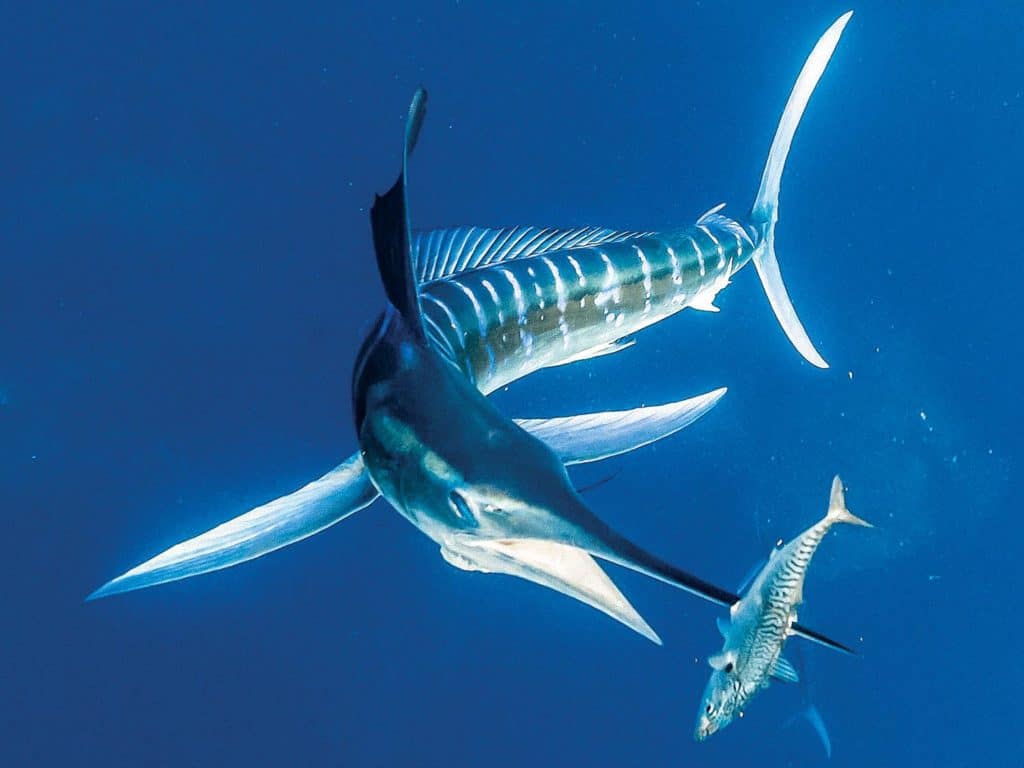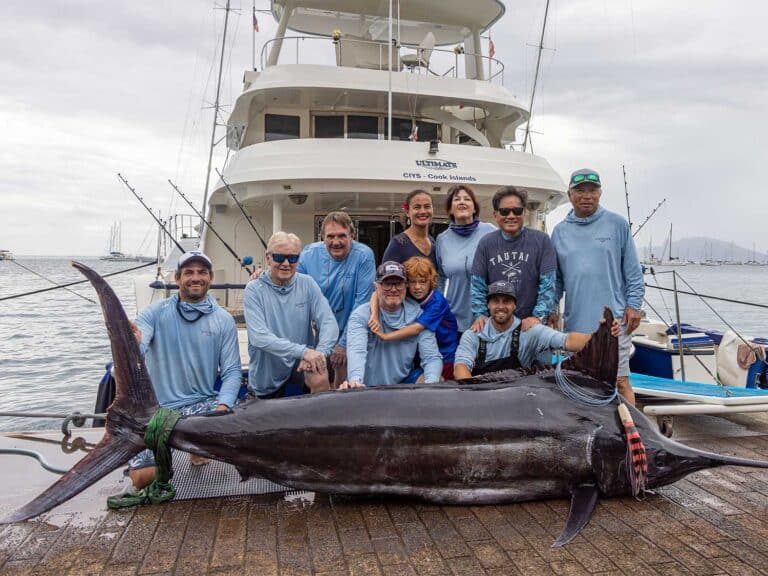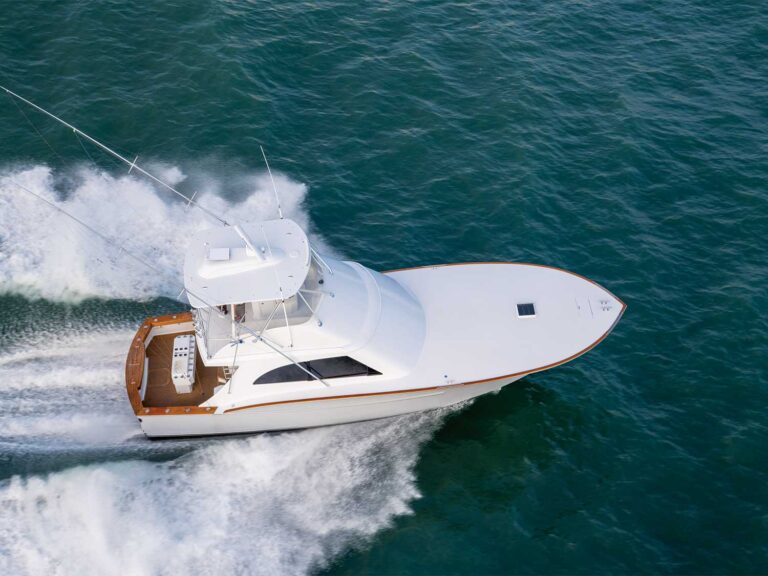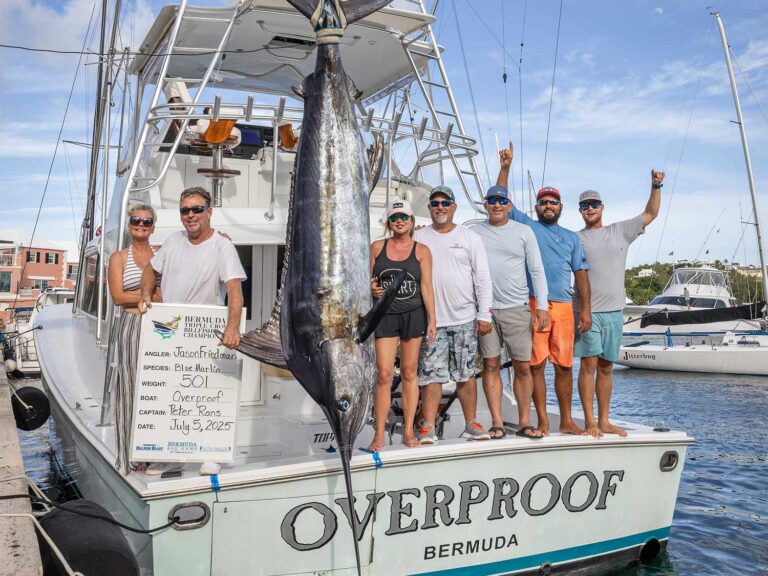
Striped marlin thrive throughout the Pacific and Indian oceans in both tropical and subtropical waters. In fact, they are the most widely distributed species of billfish in the Indo-Pacific, and are more abundant in the eastern and central north Pacific than in the western Pacific. A bycatch species in a variety of commercial fisheries, they are both targeted and coveted by recreational anglers throughout their range, so it goes without saying that some science should be directed the striped marlin’s way.
Watch: A belly-strip teaser is a great way to raise marlin and sailfish. Learn to rig one here.
So Many Questions
Striped marlin have been an object of significant research over the past decade in an effort to better understand their population structure for regional stock identification and assessment. Unfortunately, in recent years, their numbers have declined due to commercial-fishing pressure in the western and central north Pacific and Indian oceans, where the stocks are overfished and subject to overfishing.
In the eastern Pacific, however, the stock is in better shape, although the level of exploitation from artisanal fishing off Central America is not accurately known due to limited availability of catch statistics, according to the Inter-American Tropical Tuna Commission.
So, why would this same species be managed separately by location when there are no physical borders between the management regions of the Pacific Ocean? As it turns out, there are distinct genetic populations among striped marlin throughout their range. In 2018, one genetic study revealed as many as five distinct populations, and the western Indian Ocean and Oceania account for two of those five. An eastern central population was also found, along with two in the north Pacific. The striped marlin in the western Indian Ocean appear to be the most isolated of the populations; however, the genetic study found some overlap among Oceania, the western Pacific, Hawaii, and even Ecuador in the eastern Pacific. This suggests that some striped marlin make extremely long migrations—potentially across the Pacific—although this has never been validated through tagging studies.
The genetic connectivity of these fish from spatially distant locations, combined with a lack of validated tracking data, is a clear indicator that we need to learn more about striped marlin migratory and behavioral patterns. This is especially true considering the differential results from assessments conducted by regional fishery management councils and the large spatial scale of international fisheries that operate in the open ocean, as well as commercial operations that land billfish as bycatch.
Finding Answers
Luckily for stripey, the IGFA Great Marlin Race is trying to do just that. Over the past seven years, the IGMR has been deploying pop-up satellite archival tags on striped marlin as part of the Master Angler Billfish Tournament, which takes place off Southern California each year. These PSATs have been deployed between Los Angeles and Cabo San Lucas, Mexico; to date, a total of 17 of them have successfully transmitted data to the IGMR’s scientific partners at Dr. Barbara Block’s lab at Stanford University’s Hopkins Marine Station.
In general, these striped marlin tend to remain nearshore for a period of time, hugging the Baja Peninsula. In some cases, tagged fish never leave the coastal region before the tags pop off but, more often than not, the fish’s coastal phase transitions to large-scale movements into the open ocean. Of the 17 PSATs reporting, 10 exhibited westward and southwestward movement away from the eastern Pacific, potentially indicating that these fish mix with those of Hawaii. The two tagged striped marlin that traveled the farthest west also began to return to the east before the tags popped off after 240 days. This potential return to the tagging area of the eastern Pacific could explain why conventional tagging shows limited movement—possibly because the fish make long, cyclical migrations between Hawaii and the eastern Pacific—something that is not recorded with traditional tags.
This new striped marlin movement information collected using PSATs is critical to understanding how to manage the species given that IATTC states, “Tagging studies in the Pacific, using pop-off satellite tags, indicated that there is essentially no mixing among tagging areas, and that striped marlin maintain site fidelity.” The IATTC stock-assessment model used to determine stock health does not account for the level of mixing found in IGMR data, and additional tracking data could help improve the assessment process, which could lead to significantly improved conservation and management measures.
Read Next: An inside look at one of the sport’s most iconic destinations, Tropic Star Lodge.
Given the importance of striped marlin to the recreational-fishing community, learning more about their behavior and environmental preferences can change how we manage them. Based on the limited results from the IGMR, does more mixing occur between eastern and central Pacific stocks than previously thought? If we could track fish for a year or more, it’s possible we would discover that these fish travel between Hawaii and California/Mexico many times, or determine if this happens only with certain individuals, and would those fish be considered migrants? Conducting more scientific research and advancing the state of knowledge about striped marlin will definitely help us answer the questions we have.
To address the unknowns of striped marlin movements, the IGMR is continuing to deploy PSATs as part of the Master Angler Billfish Tournament between California and Cabo. In fact, six more PSATs were deployed in late 2021 offshore of Cabo, with expected pop-ups in summer 2022. And four more PSATs will be deployed off Hawaii on striped marlin over winter 2022.
The IGMR’s primary goal is to provide the information necessary to better conserve and manage billfish stocks around the world, and we hope that additional focus on striped marlin stock connectivity will improve our knowledge of a stock that is currently in desperate need of conservation.
The IGFA Great Marlin Race is a research collaboration between the International Game Fish Association and Stanford University. It is presented by Costa Sunglasses, and sponsored by Bass Pro Shops and Cabela’s Outdoor Fund, Edgewater Boats, and Release Boatworks. For more information, please visit igfa.org/the-great-marlin-race.
This article originally appeared in the March 2022 issue of Marlin.







